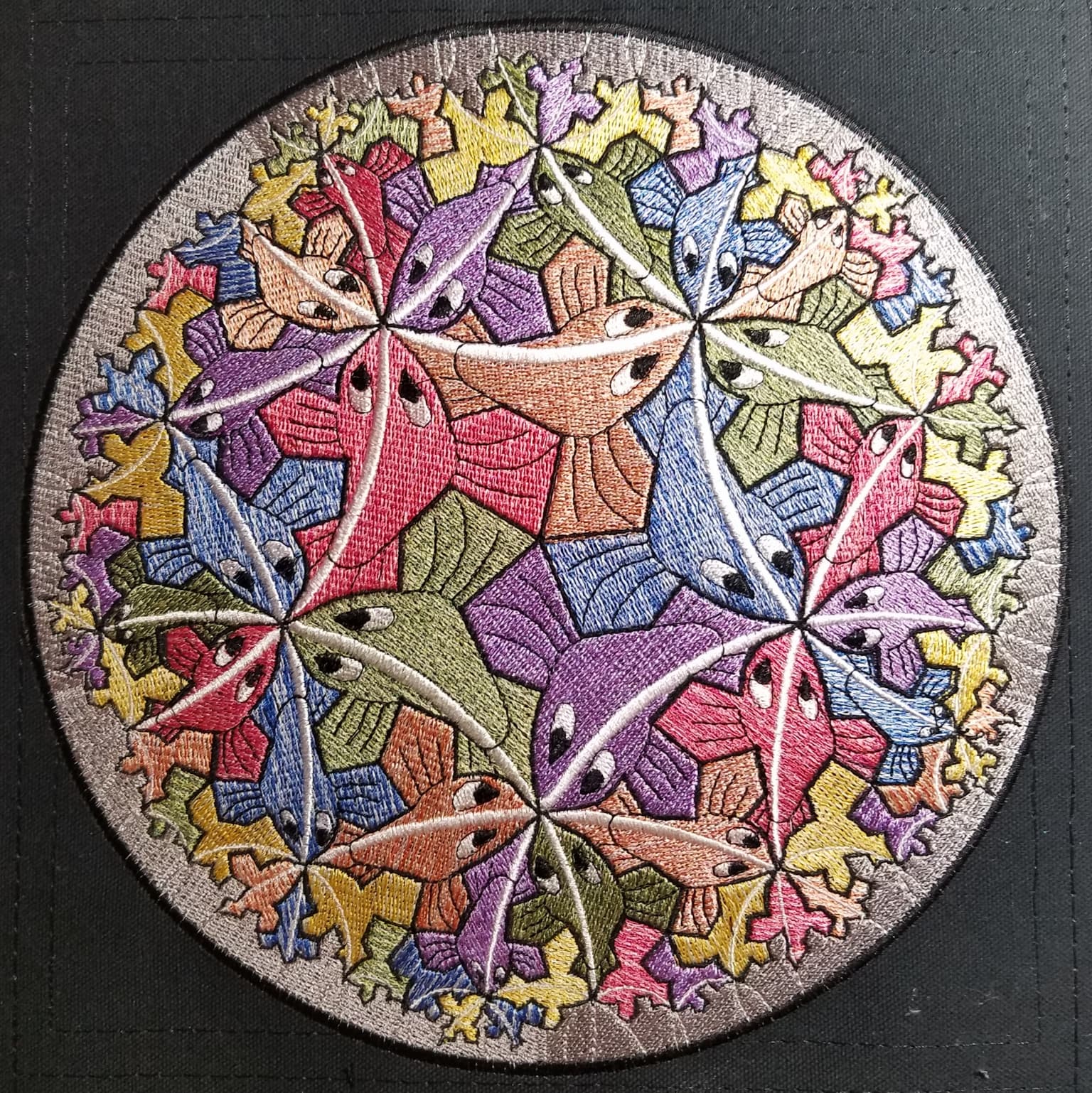2019 Joint Mathematics Meetings
Lisa Shier and Doug Dunham
Artists
Doug Dunham
Professor Emeritus of Computer Science
Dept. of Computer Science, University of Minnesota Duluth
Duluth, Minnesota, USA
Statement
Several artists have used different fiber arts to portray hyperbolic geometry. Some have knitted hyperbolic surfaces embedded in ordinary 3-space, and Tony Bomford created patterns using the Poincare circle model of hyperbolic geometry. We want to explore the possibility of using embroidery to render hyperbolic patterns in this model. Such patterns present considerable challenges for the embroiderer. The features become smaller as the bounding circle is approached and not all features can be included. The detail level drives a desire for the largest possible scale of the embroidery, which comes with a cost in complexity of implementation. The stitches must also be oriented to maintain the symmetry of the original design.
Artworks

Fish Pattern (5,3)
27 x 27 cm
Embroidery
2018